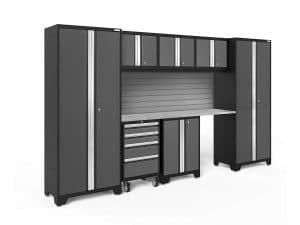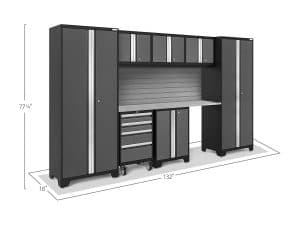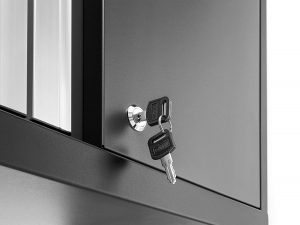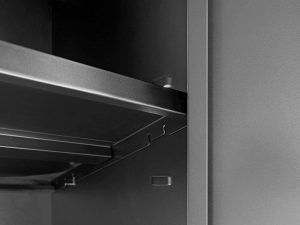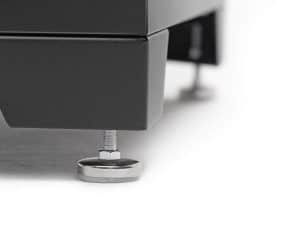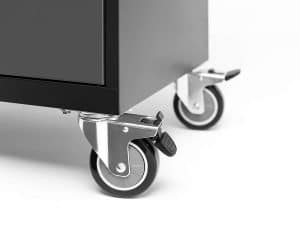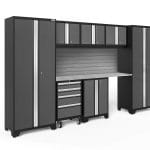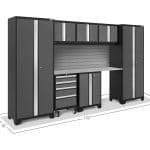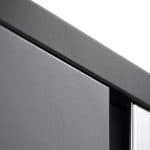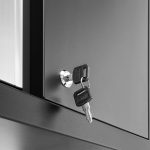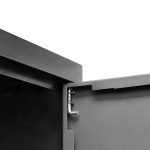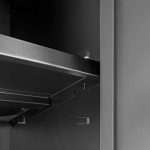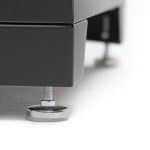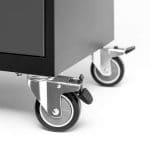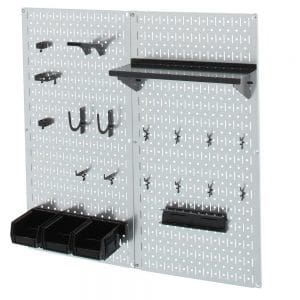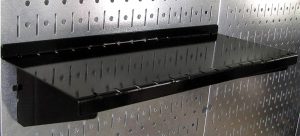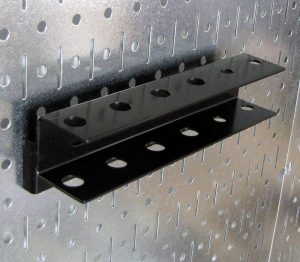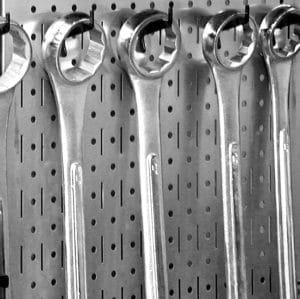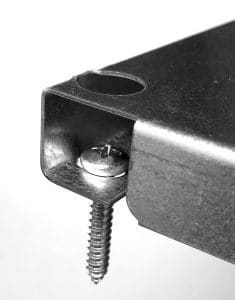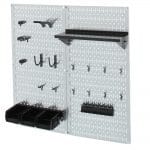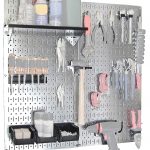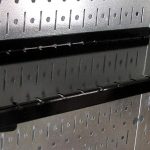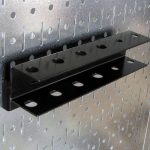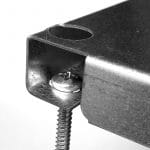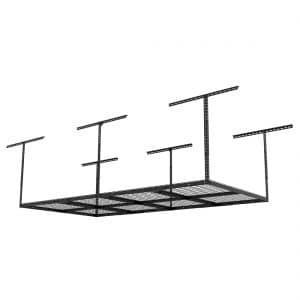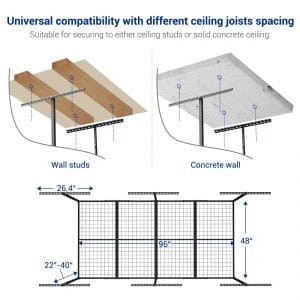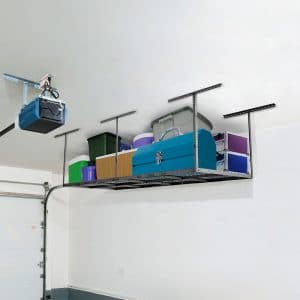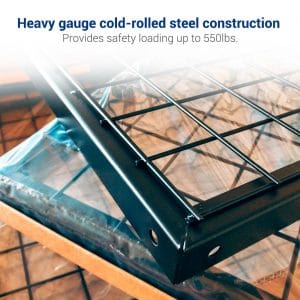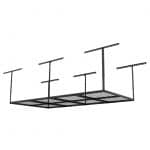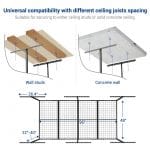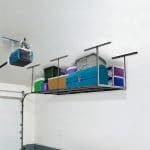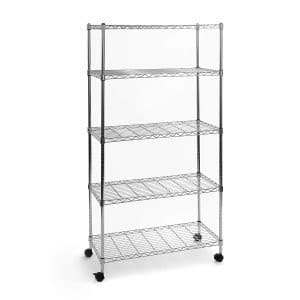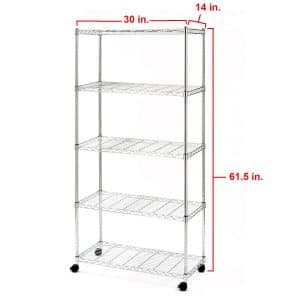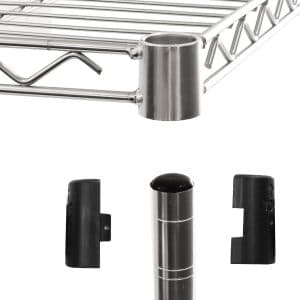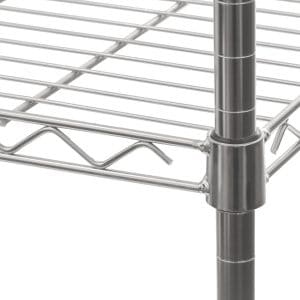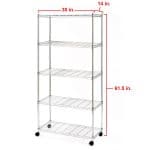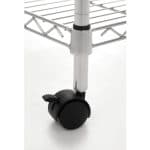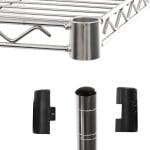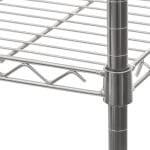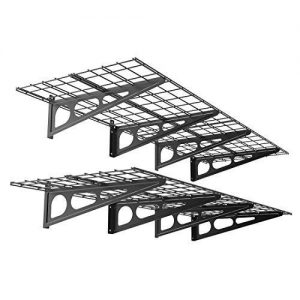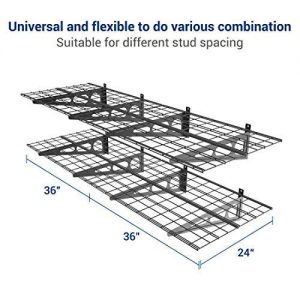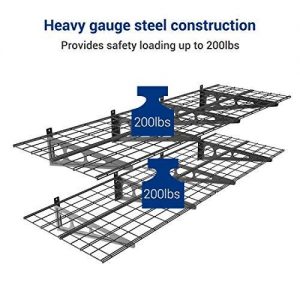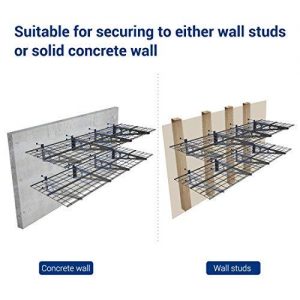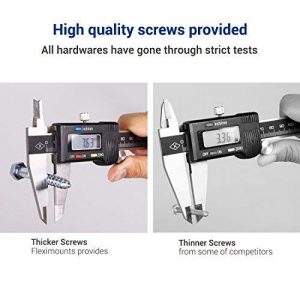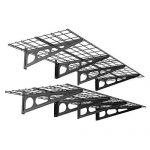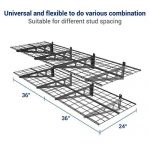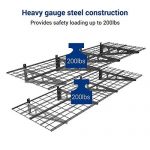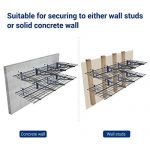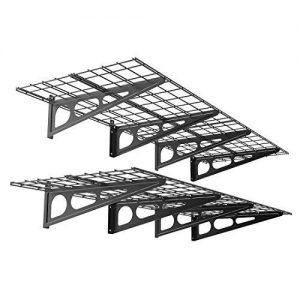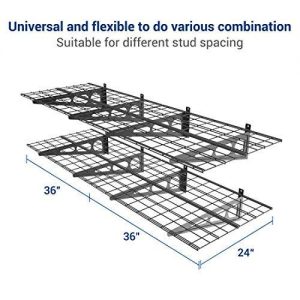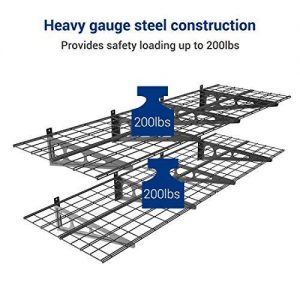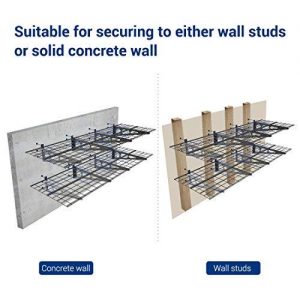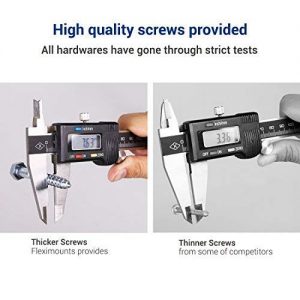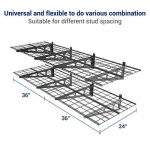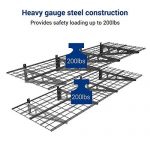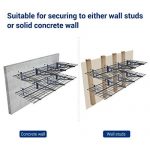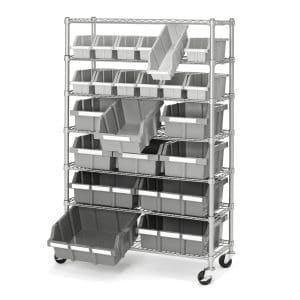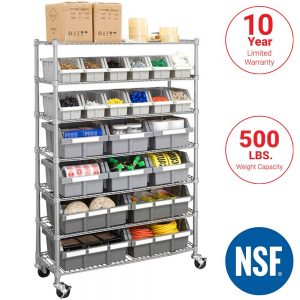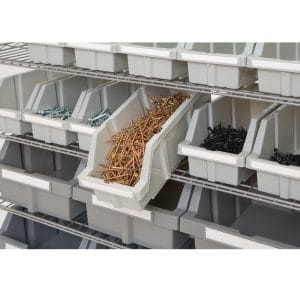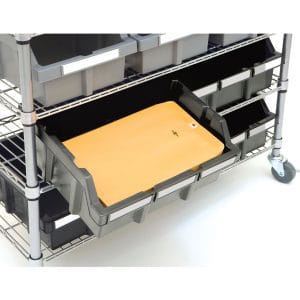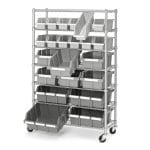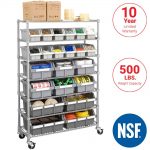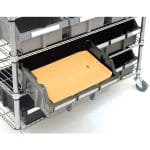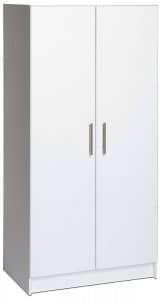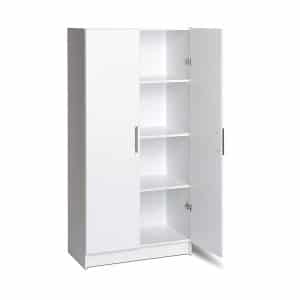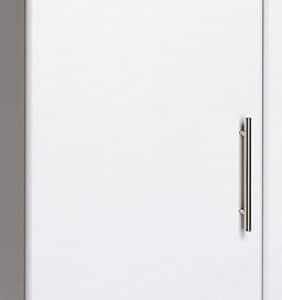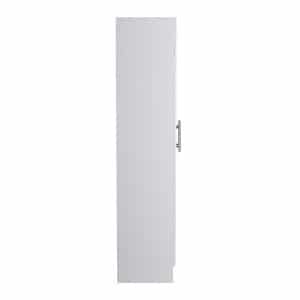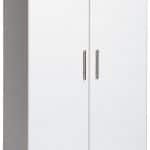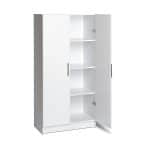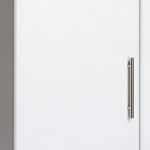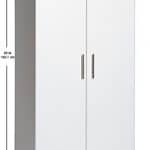Type
Garage storage takes a lot of different forms. Of course, you can store your appliances in your house, basement, or even a separate portable garage. However, it’s much more convenient to install a handy storage system right inside of your garage. The most common solutions are traditional shelving, wall-mounted pegboards, overhead hanging shelves, and cabinets.
Traditional shelving typically comes in the form of a wire shelving rack, and these systems have several advantages. They come in a number of different sizes – both in width and in height – and it is typically possible to customize the number of shelves or rearrange their heights to accommodate tall items. In addition, many shelves are on wheels, so they can be moved around the garage as needed.
Wall-mounted pegboards are a great organizational method for smaller items like tools. The advantage to pegboards is that since they lie flat against a wall, they take up virtually no space in your garage. In addition, unless you cover your pegboard in bins, it is usually easy to spot whatever you’re looking for from across the garage. Just make sure you’ve taken all of the existing wall-mounted objects into consideration. If you have a garage fan, or a wall-mounted garage vacuum, it might be tricky to find a spot for a considerable pegboard.
The downside of pegboards is that they won’t help with organizing your large boxes and things that need to sit on a solid surface.
Overhead hanging shelves are a great storage option because they utilize the dead space between your head and the ceiling. Essentially, these create storage that frees up floor space in the garage.
The downside to hanging shelves, however, is that you’ll typically need a ladder to lift things onto or off of the shelving and often even to spot whatever it is you’re looking for.
Cabinets are among the most popular storage systems and offer a ton of versatility since they typically have many drawers of varying sizes, as well as shelves and sit-on-top or underneath storage space.
Cabinets can be tricky, though, since they are typically very large and heavy and typically cannot be expanded to meet growing storage needs.
Size
How much stuff do you have? Once you’ve settled on a type of storage system, determining how big that system needs to be is the next big decision you’ll need to make. This is especially important for cabinet systems, which cannot be expanded without buying another whole system later. For shelving systems, typically you can start by buying a few units and adding more as you need them.
Weight capacity
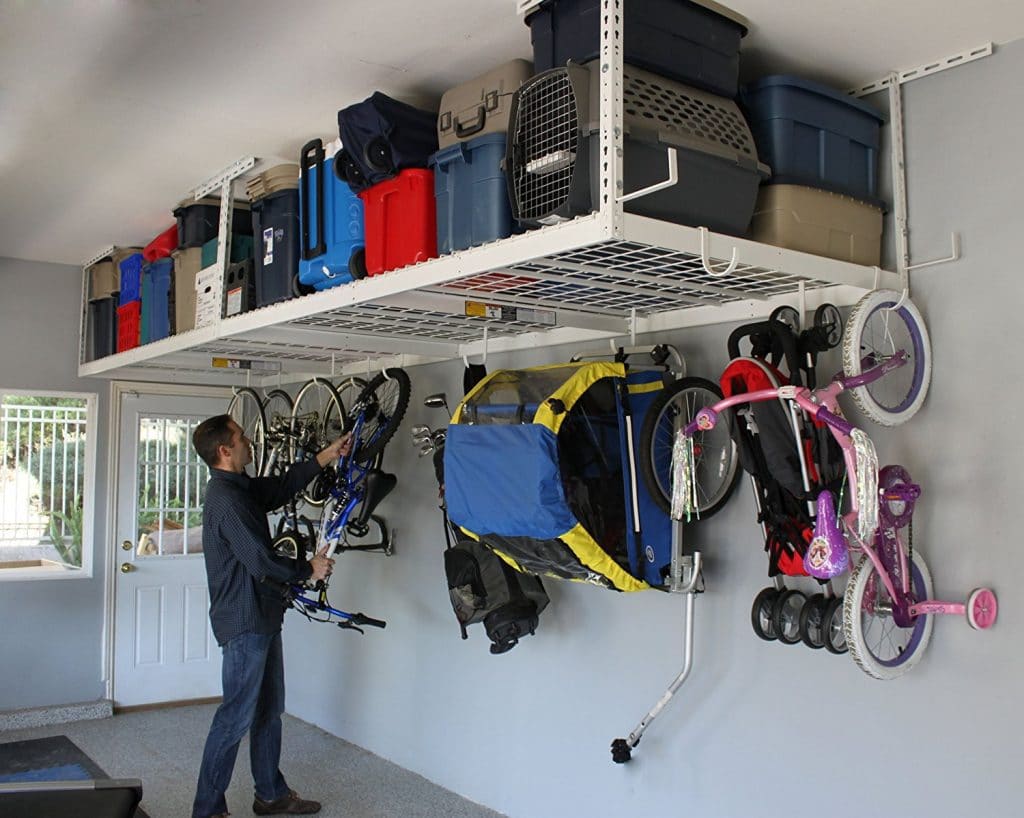
If you plan to be placing heavy tools or loaded-down boxes on your storage racks, weight capacity is an important concern. While many systems are designed to hold up to hundreds of pounds, it is always better to err on the side of caution and opt for a system that is too burly rather than too lightweight and could break under the strain.
Materials and construction
What materials your storage system is made out of directly affect its weight capacity, durability, and the weight of the system itself. Steel is a typical material for garage storage systems because it is extremely strong and durable without being excessively heavy, although it is possible to find cabinets or shelving that are made from wood or other materials as well.
Ease of assembly
The last thing you want is to bring a new storage system home only to find that it takes you an entire weekend to assemble. Good storage systems should have clear instructions and tool-free or simple assembly processes so that you can move on to organizing your stuff quickly.
Durability and warranty
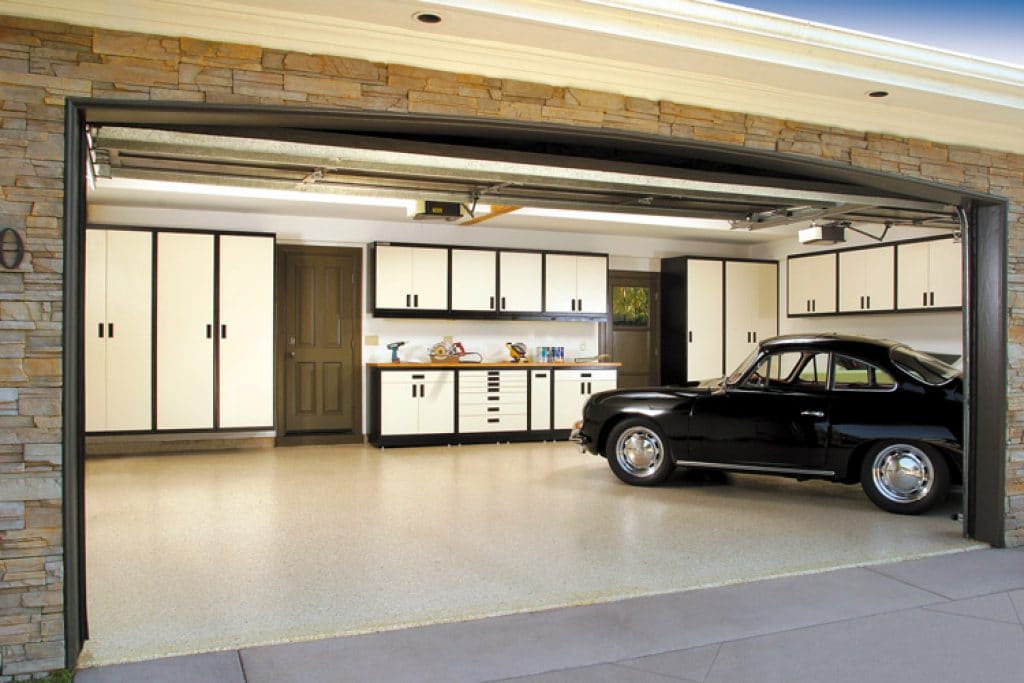
The things in your garage likely aren’t going anywhere anytime soon, so neither should your storage system. Having a storage system that can withstand the beating of loading and unloading stuff onto it and around it is critical. In addition, multi-year warranties guaranteeing that your storage system will last not only through the initial organization, but for years to come, can provide peace of mind for your purchase.

